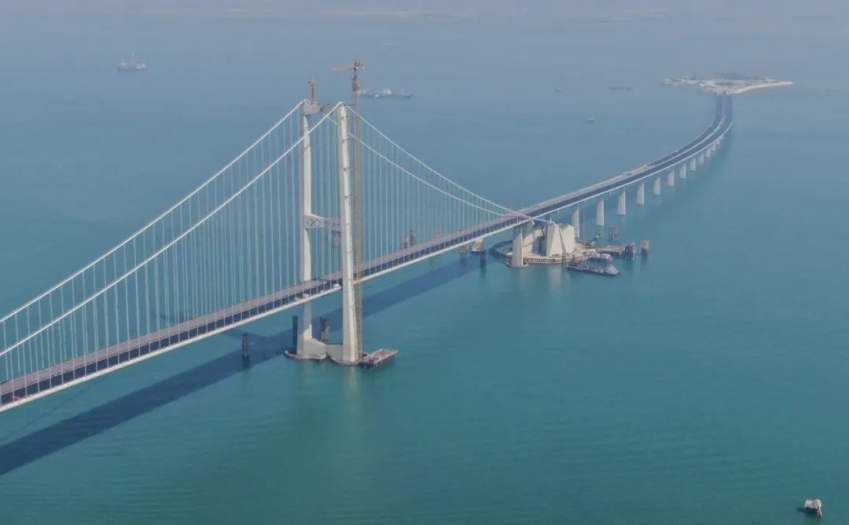Some participants at the hearing for the Shenzhen-Zhongshan Link held in Guangzhou on Jan 30 hoped that authorities introduce monthly tickets, yearly tickets, and multiple-time tickets for commuters going between Shenzhen and Zhongshan, the two cities on the east and west banks of the Pearl River.
The hearing invited 29 participants.

An aerial view of the Shenzhen-Zhongshan Link. Xinhua
The Guangdong Provincial Development and Reform Commission, the hearing organizer, prepared two toll plans for the link, a mega cross-sea passage in the Guangdong-Hong Kong-Macao Greater Bay Area (GBA) scheduled to open this year.
In Plan A, the toll for a whole single-way trip is 66 yuan (US$9.2) for passenger vehicles with no more than 7 seats and 100 yuan for those with seats between 8 and 19. Passenger vehicles with at least 20 seats will enjoy a 35% discount and only have to pay 86 yuan. The rate for trucks ranges from 66 yuan to 270 yuan, based on their gross weight.
In Plan B, the toll for passenger vehicles with up to 7 seats and 8 to 19 seats remains the same as Plan A. However, passenger vehicles with 20 to 39 seats will have to pay 132 yuan for a whole trip, while passenger buses with seats of 40 and above will have to pay 106 yuan after being given a 20% discount. The rate for trucks ranges from 66 yuan to 255 yuan, according to their gross weight.
More than half of the participants favored Plan A as they thought the toll fees were reasonable, while others suggested to authorities to further lower the fees, or give out preferential policies. For vehicles running through the link at different time periods in a day, the participants suggested using different fee standards.
According to the commission, the fee plans were made based on the annual average cost of the project during the 15-year fee collection period, which amounted to 2.2 billion yuan.
Some participants suggested introducing a dynamic fee adjustment mechanism depending on actual vehicle flows after the link was put into operation.
Preferential policies should be given to operators of cargo vehicles to lower their logistics costs, the hearing heard. Some participants also suggested lowering or even exempting fees for intercity buses.
The 24-kilometer-long project connects the city cluster of Shenzhen, Dongguan and Huizhou in the eastern part of the Pearl River Delta with the cities of Guangzhou, Zhuhai, Foshan, Zhongshan and Jiangmen in the western part. Upon operation, it will cut the travel time between Zhongshan and Shenzhen from the current two hours to less than 30 minutes.
Police Registration Number: 44200002442868
Website ID: 4420000052
Sponsored by: Office of Zhongshan Municipal People's Government
Technical Support: Information Center of Zhongshan
Without written authorization from Zhongshan Municipal People’s Government, the content of the site shall not be republished or used in any form.
About Us | Site Map| Privacy Statement| Contact us
